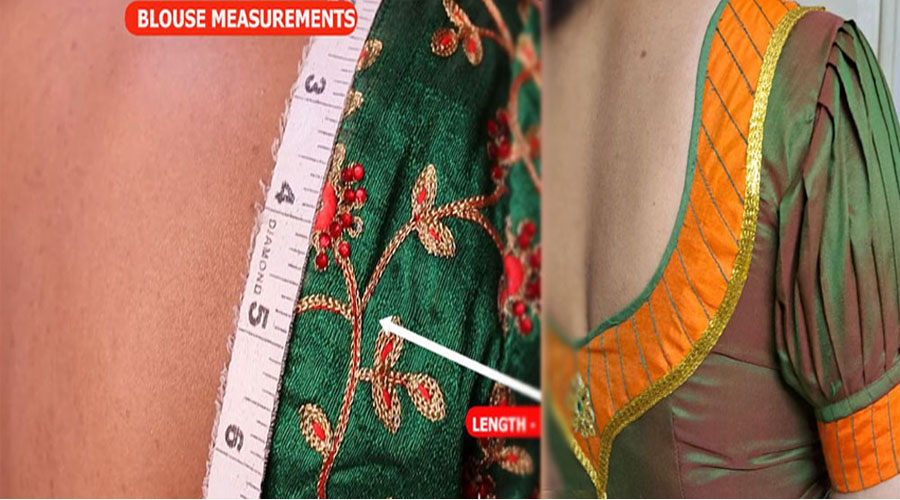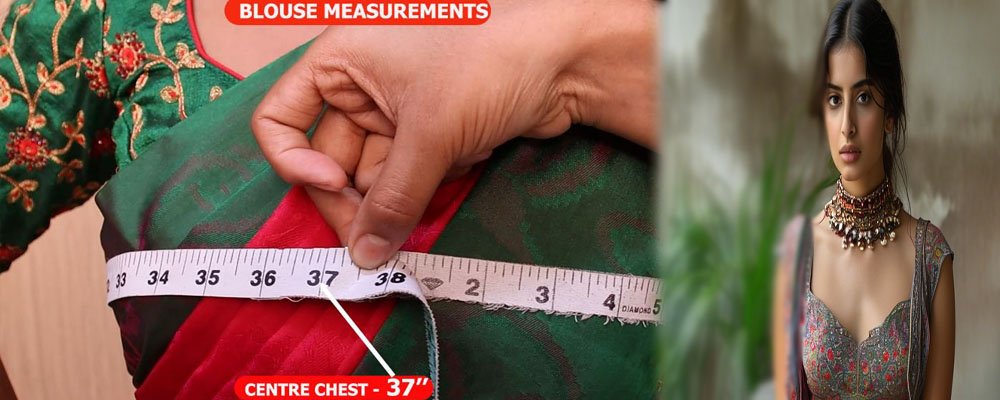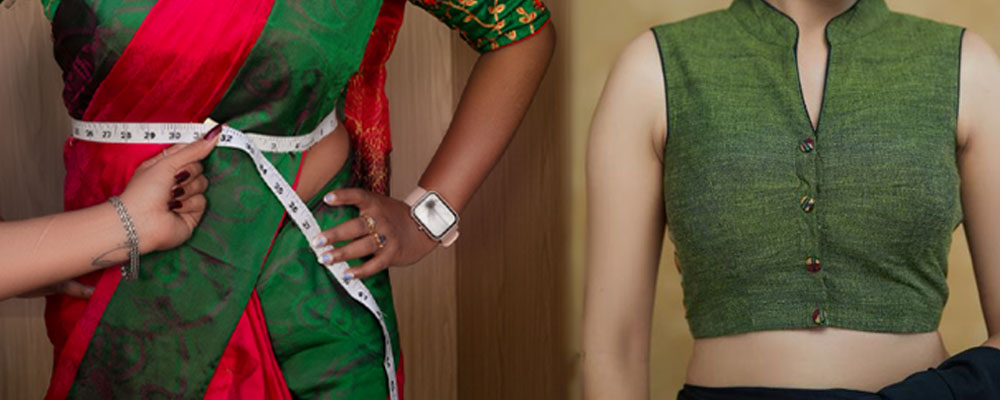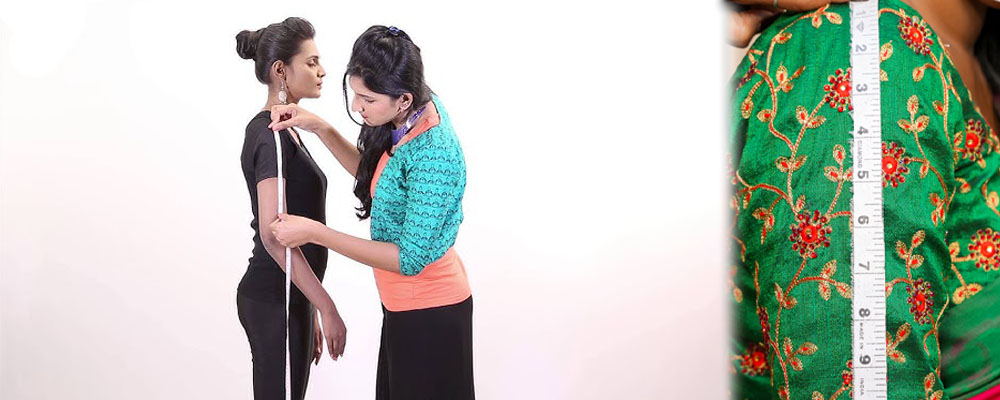
Accurate measurements are essential when it comes to selecting the right women's blouse. The fit and comfort of a blouse significantly depend on how well it conforms to the body's shape and size. A well-fitted blouse not only enhances the overall appearance but also allows for ease of movement, which is crucial for daily activities.
When measurements are taken correctly, they ensure that the blouse sits appropriately on the shoulders, chest, and waist, avoiding common issues such as tightness or excess fabric. For instance, a blouse that is too tight in the bust area can restrict movement and create discomfort, while one that is too loose may result in an unflattering silhouette.
Moreover, obtaining accurate measurements helps in making informed decisions when purchasing blouses online or in-store. With various brands and styles offering different sizing standards, having precise measurements allows individuals to compare products effectively and select the best option for their body type. It minimizes the likelihood of returns and exchanges, saving time and resources.
In addition to fit and comfort, well-measured blouses can enhance confidence. When women wear clothing that fits well, they often feel more self-assured and empowered. This psychological effect further emphasizes the significance of taking the time to measure accurately.
Overall, understanding and applying the correct measurement techniques is fundamental to choosing a women's blouse that not only looks good but also feels comfortable. The next sections will delve into specific measurement techniques and tips to achieve the perfect fit.
Standard Measurement Units
In the garment industry, standard measurement units play a critical role in ensuring the accuracy and consistency of sizing across different brands and styles. The two primary units of measurement used are inches and centimeters. Each unit has its own significance and application, catering to various markets and consumer preferences.
Inches are the predominant unit of measurement in the United States and are widely used in the fashion industry. This system allows designers and manufacturers to define garment dimensions in a way that many American consumers are familiar with. For example, a blouse size may be determined by bust, waist, and hip measurements taken in inches, making it easier for shoppers to visualize and compare sizes. The use of inches also aligns with traditional manufacturing practices in the U.S., where patterns and cutting guides are often based on this unit.
Conversely, centimeters are the preferred measurement unit in many countries around the world, particularly in Europe and Asia. The metric system, which includes centimeters, is recognized for its simplicity and ease of conversion. For instance, 1 inch equals 2.54 centimeters, making it straightforward to translate measurements for international customers. As globalization continues to influence the garment industry, understanding both measurement units becomes increasingly important for businesses to cater to a diverse customer base.
The importance of these measurement units cannot be overstated. Accurate sizing helps reduce the likelihood of returns and exchanges, which can be costly for retailers. Additionally, standardized measurements foster trust between consumers and brands, as shoppers are more likely to feel confident in their purchases when they know that sizing will be consistent. Ultimately, whether using inches or centimeters, the goal remains the same: to provide a perfect fit that enhances both comfort and style for the wearer.
Basic Measurements Overview
When fitting a woman’s blouse, several key measurements are essential to ensure a proper fit. These measurements include bust, waist, hips, shoulder width, and sleeve length. Each measurement plays a crucial role in determining how well the blouse conforms to the body and how comfortable it will be for the wearer.
Bust Measurement
The bust measurement is taken around the fullest part of the bust, typically while wearing a bra. This measurement is critical for ensuring that the blouse provides adequate coverage and support. A blouse that is too tight in the bust area can lead to discomfort and restrict movement, while one that is too loose may not provide the desired silhouette.

Waist Measurement
The waist measurement is taken around the narrowest part of the waist, usually just above the belly button. This measurement helps to define the fit of the blouse, especially if it features a tailored or cinched design. A well-fitted blouse at the waist creates a flattering shape and allows for ease of movement.

Hips Measurement
The hip measurement is taken around the fullest part of the hips. This measurement is particularly important for blouses that are longer or designed to be worn over fitted bottoms. Ensuring the right hip measurement allows the blouse to drape beautifully without clinging or pulling.
Shoulder Width Measurement
Shoulder width is measured from one shoulder seam to the other. This measurement is crucial for ensuring that the blouse sits correctly on the shoulders. A blouse that is too wide can look oversized, while one that is too narrow can restrict movement and create discomfort.

Sleeve Length Measurement
Sleeve length is measured from the shoulder seam down to the wrist or wherever the desired sleeve length ends. This measurement is vital for achieving the right proportion and style in the blouse. Proper sleeve length ensures that the sleeves fit comfortably without being too tight or too loose, contributing to the overall aesthetic of the garment.

Taking Accurate Measurements
Taking accurate measurements is vital for achieving the perfect fit for a women's blouse. Below are step-by-step instructions for measuring key areas of the body, along with tips to avoid common mistakes and ensure precision.
Bust Measurement
How to Measure: Wrap the measuring tape around the fullest part of your bust while wearing a fitted bra. Ensure the tape is parallel to the ground and not too tight or too loose.
• Tip: Take a deep breath and relax your shoulders while measuring. It helps to have someone assist you for a more accurate reading.
Waist Measurement
How to Measure: Find the narrowest part of your waist, usually just above the belly button. Wrap the measuring tape around this area, ensuring it is snug but not constricting.
• Tip: Stand up straight and breathe normally. Avoid pulling the tape too tight, as this can result in inaccurate measurements.
Hips Measurement
How to Measure: Measure around the fullest part of your hips, usually about 7-9 inches below your waist. Make sure the tape is level all the way around.
• Tip: Ensure you are wearing fitted clothing or no clothing at all for the most accurate measurement.
Shoulder Width Measurement
How to Measure: Measure from the outer edge of one shoulder seam to the outer edge of the other shoulder seam. Keep the measuring tape straight across your back.
• Tip: Stand with your shoulders relaxed to avoid any undue tension that could affect the measurement.
Sleeve Length Measurement
How to Measure: Start at the shoulder seam and measure down to your wrist or the desired sleeve length. Bend your elbow slightly to ensure the tape follows the natural curve of your arm.
• Tip: It can be helpful to wear a blouse that fits well in the sleeve area for comparison while taking this measurement.
General Tips for Accurate Measurements
• Use a Flexible Measuring Tape: A soft tape measure is essential for taking body measurements accurately.
• Check the Tape Position: Always ensure that the tape is level and not twisted when measuring.
• Double-Check Measurements: Take each measurement twice to confirm accuracy. If there is a discrepancy, use the larger number for a more comfortable fit.
• Record Measurements Immediately: Write down your measurements as you take them to prevent forgetting or misremembering.
By following these steps and tips, you can ensure that your measurements are precise, leading to a well-fitted blouse that enhances both comfort and style.
Understanding Size Charts
Interpreting size charts is crucial in selecting the perfect women's blouse, as sizing can often vary significantly between different brands and styles. Size charts provide a reference for understanding how garment measurements correspond to body dimensions, which allows consumers to choose sizes that are more likely to fit well.
Most size charts include key measurements such as bust, waist, and hips, along with corresponding sizes typically identified by letters (XS, S, M, L, XL) or numbers (2, 4, 6, etc.).
One of the primary challenges consumers face is that different brands may have variations in their sizing standards. For instance, a size medium in one brand may equate to a large in another
Conclusion
In summary, selecting the right women's blouse involves a thorough understanding of measurement techniques, size charts, and addressing common fit issues.
When shopping for blouses, it is vital to remember that sizing is not uniform across brands; therefore, consulting the specific size chart for each brand is crucial. Moreover, recognizing and measuring additional dimensions, such as neck circumference, armhole depth, and length from shoulder to hem, can enhance the fit further. These practices help ensure that the blouse fits well and flatters the wearer’s shape.

